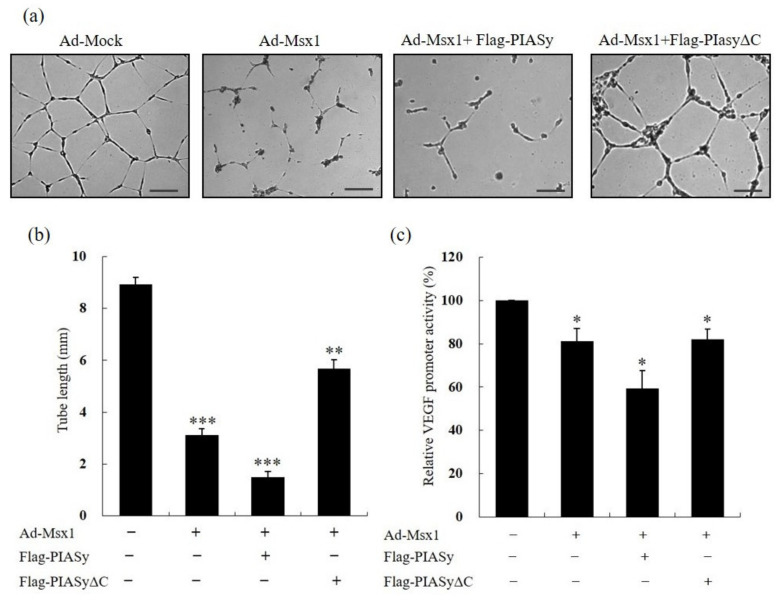Figure 4.
Homeoprotein Msx1-PIASy interaction is critical for suppression of angiogenesis in vitro. (a) PIASy-Msx1 interaction is crucial for angiogenesis in vitro. Adenovirus-infected HUVECs were plated on growth factor-reduced Matrigel and then transfected with the indicated PIASy construct expressing full-length (PIASy) or C-terminal-deleted PIASy (PIASyΔC) that did not contain the Msx1-interacting domain in the presence of VEGF (10 ng/mL) for 48 h, and tube formation was assessed. The formation of tubular structures was detected by an inverted microscope. Tube length was quantified by measuring the length of tubular structures. The results are expressed as the mean value ± standard deviation (SD). The scale bar represents 100 μm. (b) Quantification of the tube length. Tube lengths were quantified, and error bars correspond to 95% confidence intervals. ** p < 0.01, *** p < 0.001 indicates a significant difference. (c) Msx1-PIASy interaction is critical for transcriptional repression of the VEGF promoter in HUVECs. HUVECs were co-transfected with the indicated PIASy construct and the luciferase reporter construct containing the human VEGF promoter sequence. After 18 h, co-transfected HUVECs were further infected with Ad-mock or Ad-Msx1 for an additional 24 h. Total cell lysates were prepared and subjected to a dual luciferase assay to determine VEGF promoter activity, and relative luciferase activity was plotted. * p < 0.05 indicates a significant difference.

